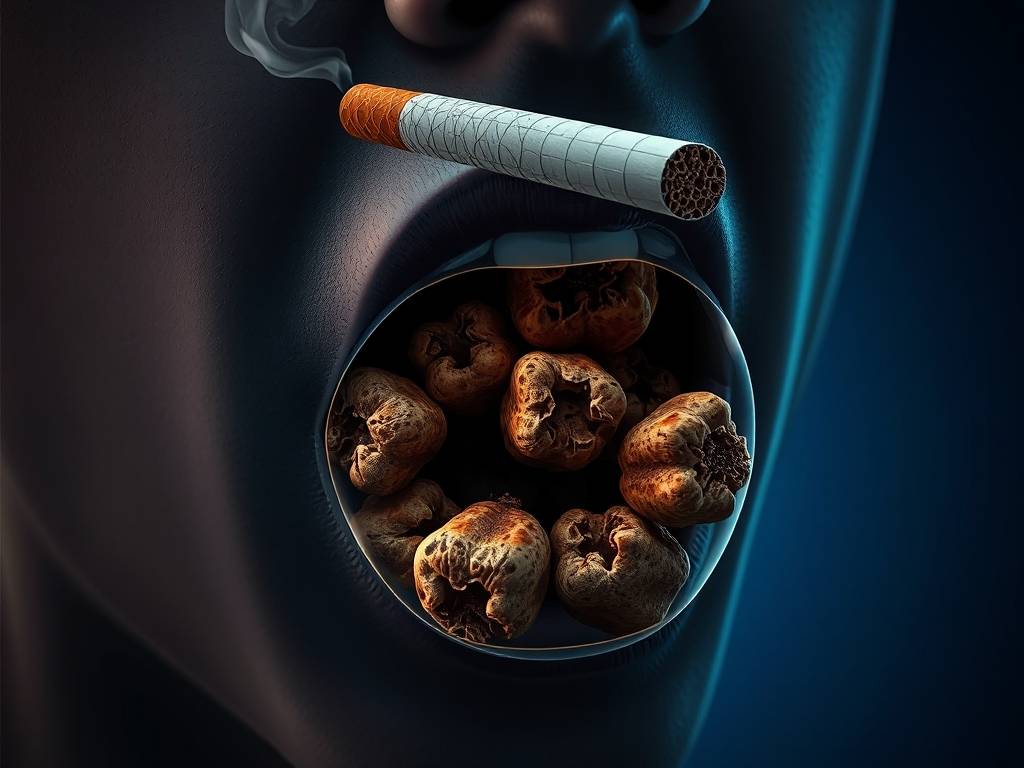Does Smoking Really Damage Taste Buds? Why Haven’t You Quit Yet?
Walk into any café, and you might hear a smoker joke about “needing a cigarette to appreciate the coffee.” But beneath that casual remark lies a troubling truth: smoking doesn’t just pair with your morning brew—it actively erodes your ability to taste it. For years, scientists have documented how tobacco use harms taste buds, yet millions continue to light up. Let’s break down the science of smoking’s impact on taste, the hidden costs of ignoring it, and why now is the best time to quit.
First: Yes, Smoking Damages Taste Buds—Here’s How
Taste buds are tiny, onion-shaped clusters of cells on your tongue and the inside of your mouth. Each bud contains 50–100 “taste receptor cells” that detect sweet, salty, sour, bitter, and umami flavors, sending signals to your brain to interpret what you’re eating. Smoking disrupts this process at every step, and the damage starts almost immediately.
Nicotine, the addictive chemical in cigarettes, is the first culprit. When you inhale smoke, nicotine binds to receptors on taste bud cells, interfering with their ability to send signals to your brain. A 2018 study in the Journal of Oral Pathology & Medicine found that smokers have 20–30% fewer functional taste receptors than non-smokers, especially for sweet and umami flavors. Over time, this “signal block” becomes permanent: tar and other toxic chemicals in smoke coat taste buds, creating a thick layer that prevents food molecules from reaching receptors. Imagine trying to taste a strawberry through a layer of plastic wrap—that’s what smoking does to your tongue.
Worse, smoking slows the regeneration of taste buds. Normally, taste receptor cells replace themselves every 10–14 days, keeping your sense of taste sharp. But research from the University of California, San Francisco, shows that cigarette smoke damages the stem cells responsible for this renewal. For heavy smokers (those who smoke a pack a day or more), the turnover rate drops by half. This means damaged taste buds aren’t replaced, leading to a gradual “dumbing down” of taste over months or years.
The effects aren’t just physical—they’re psychological, too. As taste fades, smokers often crave stronger flavors (like spicy food or sugary snacks) to compensate, creating a cycle of unhealthy eating. A 2020 survey by the American Dental Association found that 68% of smokers reported eating more processed food than they did before they started smoking, partly because they could no longer taste the subtleties of fresh fruits or vegetables.
The Damage Doesn’t Stop at Taste Buds
If the loss of flavor wasn’t enough, smoking’s impact on taste is a warning sign of more serious health issues. Taste buds are part of your body’s “mucosal barrier”—a protective layer that lines your mouth, throat, and digestive tract. When smoking damages taste buds, it weakens this barrier, making you more vulnerable to infections like thrush (a fungal infection that causes white patches in the mouth) and gum disease. Both conditions further dull taste, creating a vicious cycle.
Smoking also increases the risk of oral cancer, which often starts as a painless sore on the tongue or gums. Early symptoms include a persistent loss of taste in one area of the mouth, but many smokers dismiss this as “just part of smoking” and delay seeking treatment. The American Cancer Society reports that smokers are twice as likely to develop oral cancer as non-smokers, and the five-year survival rate drops drastically if the cancer is not caught early.
Even “vaping” or using e-cigarettes—often marketed as a “safer” alternative—harms taste buds. A 2022 study in Tobacco Control found that e-cigarette vapor contains formaldehyde and acrolein, chemicals that damage taste receptor cells just like traditional cigarette smoke. Many vapers report a “metallic taste” or “vaper’s tongue” (a temporary loss of taste), but long-term use can lead to permanent damage.
Why Haven’t You Quit? Common Excuses (and Why They Don’t Hold Up)
Despite the clear evidence, quitting smoking is hard—and not just because of nicotine addiction. Many smokers cling to excuses that feel valid in the moment, but fall apart when you look at the facts:
“I’ve smoked for years—my taste buds are already gone.” False. While long-term smoking causes permanent damage, studies show that even after 20 years of smoking, quitting can restore some taste function. A 2019 study in PLOS One followed 500 former smokers and found that 73% reported improved taste within six months of quitting. The stem cells in your mouth are resilient—they just need a break from smoke to start regenerating.
“Quitting will make me gain weight.” It’s true that some people gain 5–10 pounds after quitting, but this is often temporary. The weight gain happens because smokers no longer burn calories from nicotine (which speeds up metabolism) and may turn to food to replace the “oral habit” of smoking. However, this weight gain is manageable with small changes—like swapping sugary snacks for nuts or going for a 10-minute walk after meals. The long-term benefits (like better taste and lower cancer risk) far outweigh a few extra pounds.
“I don’t have the willpower.” Willpower alone isn’t enough—and that’s okay. Nicotine is as addictive as heroin, and quitting often requires support. Today, there are more tools than ever: nicotine replacement therapy (like patches or gum), prescription medications (such as varenicline, which reduces cravings), and support groups (both in-person and online). The CDC reports that smokers who use a combination of these tools are 30% more likely to quit successfully than those who try to quit “cold turkey.”

“I’ll quit when I’m older.” The longer you wait, the harder it is to reverse the damage. Taste buds become less resilient as you age, so a 50-year-old smoker will have a harder time regaining taste than a 30-year-old. Quitting now also reduces your risk of heart disease, stroke, and lung cancer—all of which become more common with age. There’s no “perfect time” to quit, but the best time is always today.
How to Quit (and Regain Your Sense of Taste)
Quitting smoking is a journey, not a one-time event. Here’s a step-by-step plan to help you start:
Set a quit date. Pick a day in the next two weeks—this gives you time to prepare without putting it off indefinitely. Tell friends and family about your quit date so they can support you.
Remove triggers. Get rid of cigarettes, lighters, and ashtrays from your home, car, and workplace. Avoid places where you usually smoke (like your favorite bar or coffee shop) for the first few weeks.
Use nicotine replacement therapy (NRT). NRT delivers small, controlled doses of nicotine to reduce cravings. Options include patches, gum, lozenges, inhalers, and nasal sprays. Talk to your doctor to find the right one for you—most are available over the counter.
Find a support system. Join a quit-smoking group (like those offered by the American Lung Association) or work with a counselor who specializes in tobacco cessation. Apps like QuitNow! or Smoke Free can also help you track your progress and connect with other quitters.

Be patient with your taste buds. It may take 2–4 weeks to notice a difference, but keep going. Start with simple, fresh foods (like a ripe tomato or a piece of dark chocolate) to reintroduce your taste buds to natural flavors. Many former smokers report that food “tastes like it did when I was a kid” after a few months of quitting.















